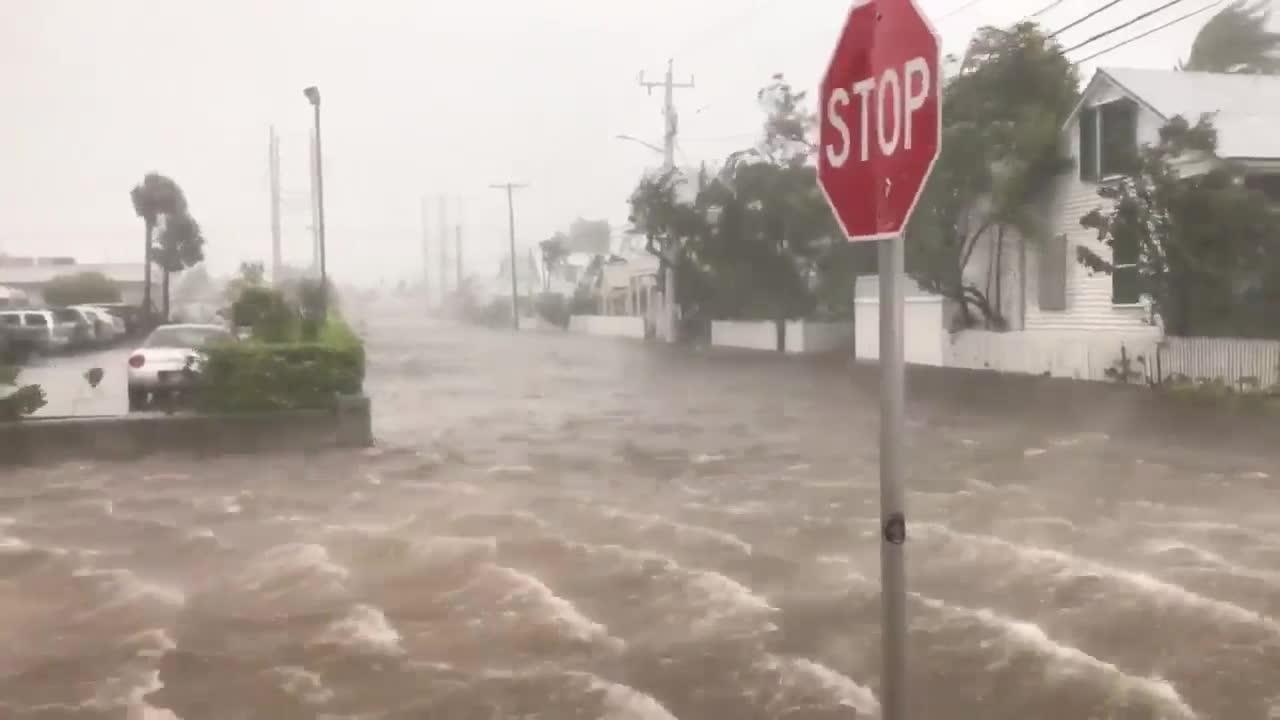Millions needs your prayer as deadly Irma slams into Florida

Millions of people huddled in shelters or battened-down homes in Florida on Sunday morning as Hurricane Irma, one of the most powerful storms ever recorded in the Atlantic, hit the state with 130-mph (210 kph) winds.
The National Hurricane Center forecast potentially deadly storm surges – water driven ashore by the winds – of up to 15 feet (4.6 m) along some parts of the coast. As the storm made landfall on the Florida Keys archipelago off the tip of southern Florida, torrential rains and lashing winds knocked out power to nearly 800,000 homes and businesses on the mainland, according to utilities.
“Pray for us,” Florida Governor Rick Scott said in an ABC News interview as his state braced for the massive storm, which has already left a trail of destruction through the Caribbean.
Irma, which prompted one of the largest evacuations in U.S. history, is expected to cause billions of dollars in damage to the third-most-populous U.S. state, a major tourism hub, with an economy comprising about 5 percent of U.S. gross domestic product.
Irma was a Category 4 hurricane raging in the lower Florida Keys as of 9 a.m. EDT (1300 GMT), on a path that will take it up Florida’s Gulf of Mexico coast near population centers including Tampa and St. Petersburg, the NHC reported. Forecasters also warned tornadoes could form in large portions of the state.
Irma, which killed at least 22 people as it tore through Caribbean islands toward Florida, has already claimed at least one life in the state. Emergency responders in the Florida Keys said they pulled a man’s body from his pickup truck, which had crashed into a tree in high winds.
But officials say it is the water and not the winds that people should fear most.
“Storm surge has the highest potential to kill the most amount of people and to cause the most amount of damage,” Brock Long, administrator of the Federal Emergency Management Agency told “Fox News Sunday.”
The time to evacuate the Keys had passed, he said, “It’s too late for folks in Monroe County, the Florida Keys. Maximum radius winds and the eye are moving over as we speak.”
STORM BABY
One woman in Miami’s Little Haiti neighborhood delivered her own baby, with medical personnel coaching her on the phone because emergency responders were not able to reach her, the city of Miami said on Twitter. The two are now at the hospital, it said.
Ahead of the storm, officials in Florida had ordered a total of 6.3 million people, or about a third of the state’s population, to evacuate.
But some state residents planned to ride out the storm in their homes. Midway up the state’s Gulf Coast in Clearwater, Sarah Griffin said she planned to hunker down in a closet in her boarded-up concrete house.
“You’ve just got to have plenty of beer, Captain Morgan, vodka, (and) you’ll get through,” said Griffin, 52.
The NHC has put out a hurricane warning and a tropical storm warning stretching through almost all of Florida into Georgia and South Carolina, home to more than 20 million people.
Irma comes just days after Hurricane Harvey dumped record-setting rain in Texas, causing unprecedented flooding, killing at least 60 people and leaving an estimated $180 billion in property damage in its wake. Almost three months remain in the Atlantic hurricane season, which runs through November.














0 Comments